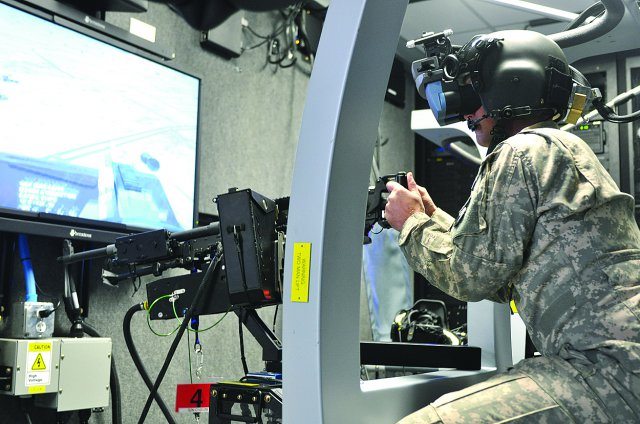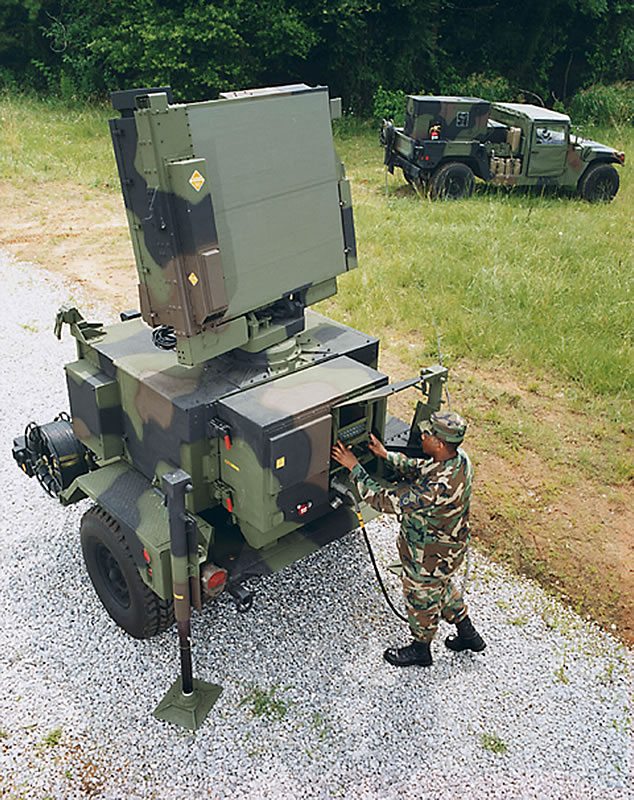It looked like a scene out of a science fiction movie on post Wednesday morning as a group of 101st Combat Aviation Brigade noncommissioned officers trained on a new simulator for the first time.
The Non-rated Crew Member Manned Module, or NCM3, came to post last week to be used for the first time beyond the testing stages. The module is a simulator that was created to train helicopter crews on the rear of both the CH-47 Chinook and UH-60 Black Hawk.
Through specially created virtual reality glasses, which fit as night vision goggles would, Soldiers can perfect gunnery tasks. Also included in the simulator are ways to perfect and practice sling load and hoist operations without ever leaving the ground.
The training can be linked with the Aviation Combined Arms Tactical Trainer, allowing crew chiefs and other Soldiers to communicate seamlessly with the helicopter’s pilot who may be training in a different simulator.
The NCM3 includes task-driven scenarios, which can be adjusted by the instructor to include weather conditions, lighting variations and other specific situations.
“The weapons are M240[H]s that we actually use in the Army,” explained Sgt. 1st Class Richard Madill. “The only thing they did was they took the mechanism out that allows it to fire. That’s the big modification that’s made. It has sensors all over to allow you to control it. It tells you when you have your mock ammo loaded, it tells you when they pull the triggers and different things like that.”
Even the simplest of everyday occurrences adds realism to the experience.
“It creates thunderstorms, and when it has the thunderstorms, you can actually hear the thunder,” Madill said. “You can see the lighting.”
Madill is a subject matter expert from the Directorate of Training and Doctrine at Fort Rucker, Ala., who actually helped in the design of this one-of-a-kind simulator.
The realism goes beyond what the gunners or other crew members might see on the screen during the simulated flight. The weaponry is also affected by a control load box, which gives the Soldier a sense of wind resistance on the gun.
“Right now, this weapon is hard to push in the opposite direction because it’s simulating that we’re flying forward very fast,” Madill said.
When equipped with the virtual glasses, Soldiers feel as if they are on board a helicopter, and they can even lean out simulated bubble windows created for the CH-47.
“He’s able to look up at the engine compartment and make sure it’s not on fire or leaking oil,” Madill explained of the simulated window’s importance to a crew member.
The simulator is good for a number of reasons, mainly because of safety, efficiency and flexibility. The simulator eliminates the need to schedule a helicopter for training, saves on fuel and ammunition costs, and lessens many of the risks faced during real flights. Inclement weather outside also does not affect the progression of training in the simulator.
“Prior to this trailer, we [didn’t] have a trainer for the backseaters,” Madill said. “For the crew chiefs, door gunners, we don’t have a trainer to be able to do that. And this allows us to bring a guy out here and start some sort of aircraft progression, without actually using blade time.”
With increased safety, the simulator allows easy training on scenarios that would take much more planning and coordination otherwise.
“This allows us to train on tasks that we don’t get a chance to do normally,” Madill said. “We’re able to do this rescue hoist, which in real life, it’s dangerous to put a live person on the hoist. It’s dangerous, but we need to be able to train it. This allows us to train it here. We don’t have to use blade time to do that, we don’t have to (risk) someone’s life.”
Madill added the simulator should increase “unit cohesion, crew cohesion and crew coordination.” Sgt. Weston Williams, 101st CAB, spent a significant amount of time in the gunner’s position in the simulator’s UH-60 Black Hawk setup. He agreed with Madill’s assessment, adding that the “high-tech video game” feel would be ideal for training first-time crew members.
“It will give a chance to evaluate the new guys first and see where they stand,” he said.
Fellow Sgt. Nolin Worthley, 101st CAB, said the scope of the scenarios available would aid in training for combat situations.
“You’d be surprised how many similarities there are between this and the real [helicopter],” he said. “I think it is fantastic. You can do a whole lot of things. This is going to actually make it where I can at least get people talking correctly on the radios before I’m actually putting them in [a helicopter].”











